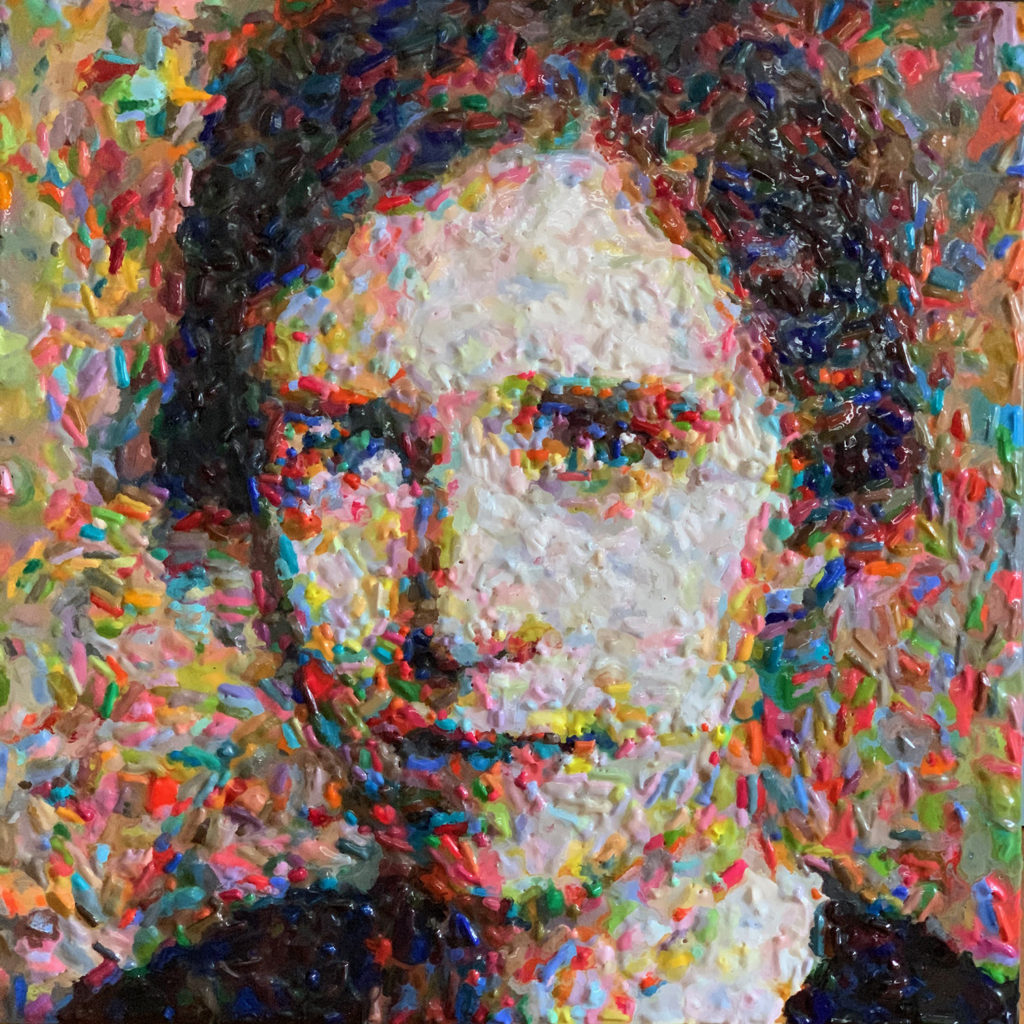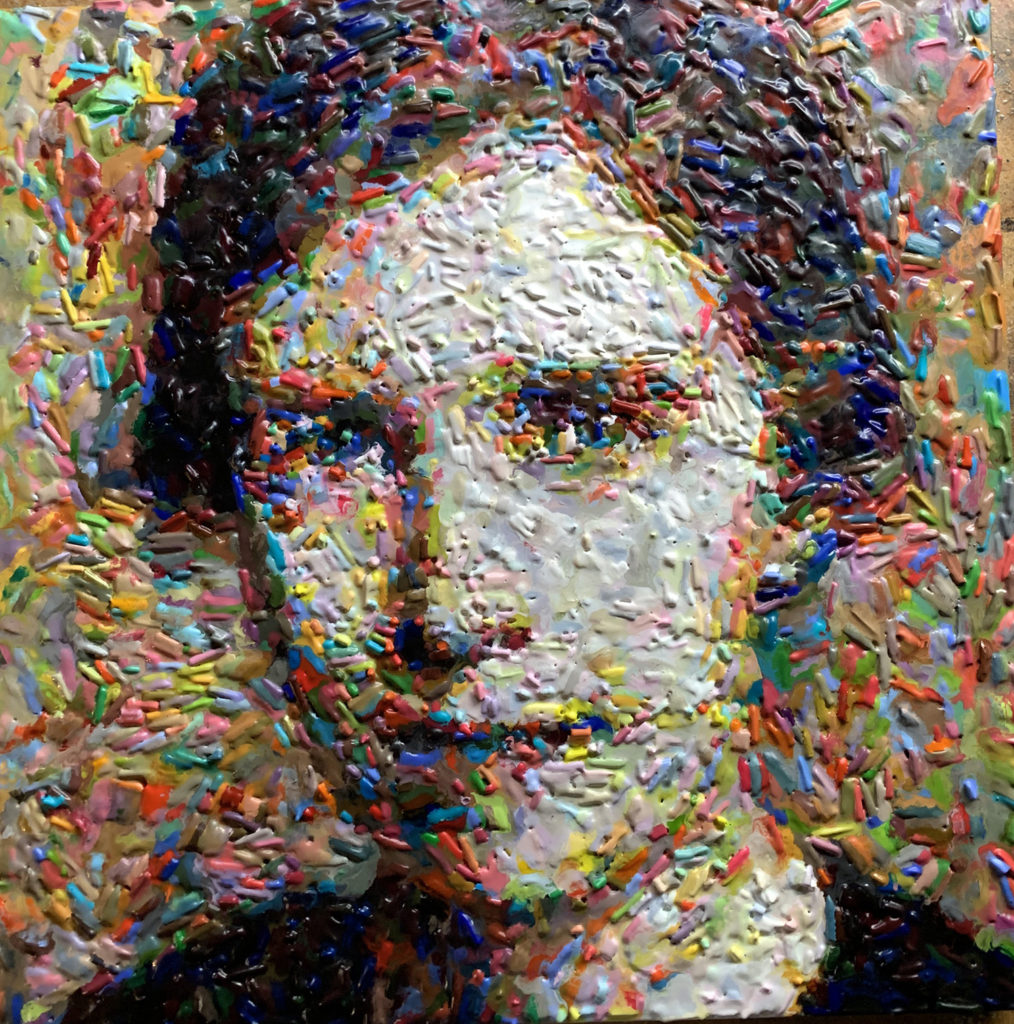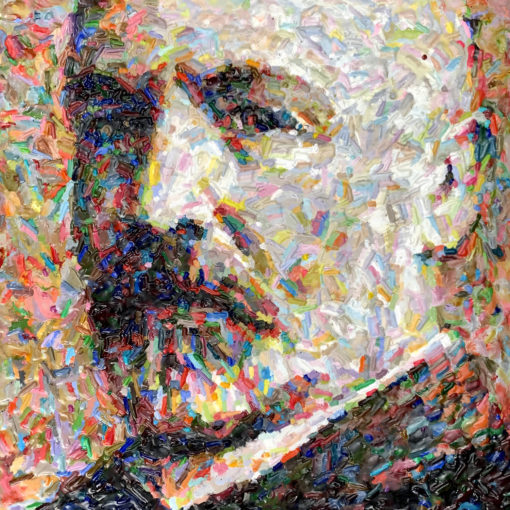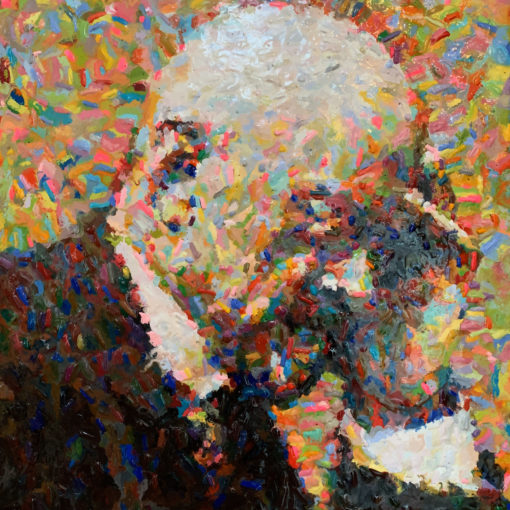Mary Cartwright (Mathematician Series) –36×36”
Melted hand cast encaustic crayons

Mary Cartwright (1900-1998) was a mathematician in England when women were just beginning to break into the male-dominated field. Despite her tendency to play down her achievements and contributions in the world of mathematics, she was eventually knighted, becoming Dame Mary Cartwright. She lived through both World Wars and lost two of her brothers in WWI. Very unusual at the time for a woman, she received her PhD in math at Oxford and worked with some of the same professors that Ramanujan had before her, such as G.H. Hardy and J.E. Littlewood.
Although she is famous for a theorem that was named for her, she is most well-known as one of the founders of the field of Chaos Theory. Along with J.E. Littlewood, she refined radar capabilities for the British government before WWII. There were “bugs” in the radar of the time that annoyed the military because of the unacceptable levels of “noise.” Cartwright and Littlewood worked on the equations dealing with how radio waves behave, and their results enabled engineers to design better radar that eliminated some of the noise, making it more accurate and less frustrating. In this way, the two founded the field of Chaos Theory. Simply put, this is the study of dynamic systems (like fluids, the stock market, weather, the human body) which have infamously unpredictable behavior. Small differences in initial conditions in these systems (such as rounding data to two decimal places rather than six places) can result in widely diverging outcomes.
Chaos Theory explains why, even with today’s meteorological advances, it’s very hard to forecast weather accurately a week in advance. Cartwright’s work was further developed in the 1960s by Edward Lorenz who coined the term, the “butterfly effect,” to explain this phenomenon. He suggested, for example, that the flap of a butterfly’s wings in Brazil could set off a tornado in Texas. The butterfly effect is a common theme in pop culture. In the German film, Run, Lola, Run, the plot runs its course three different times with small changes introduced into each of the three scenarios, showing that three widely diverging outcomes result from seemingly inconsequential initial variations.
Cartwright was the first female mathematician to be elected as a Fellow of the Royal Society, published over 100 papers on varying math topics, and served as a professor and administrator in colleges around the world. Not only was she a mathematical genius, but she was also well-versed in history, music, and painting, and sported a wry sense of humor that earned fans for her among her friends, students, and colleagues.












